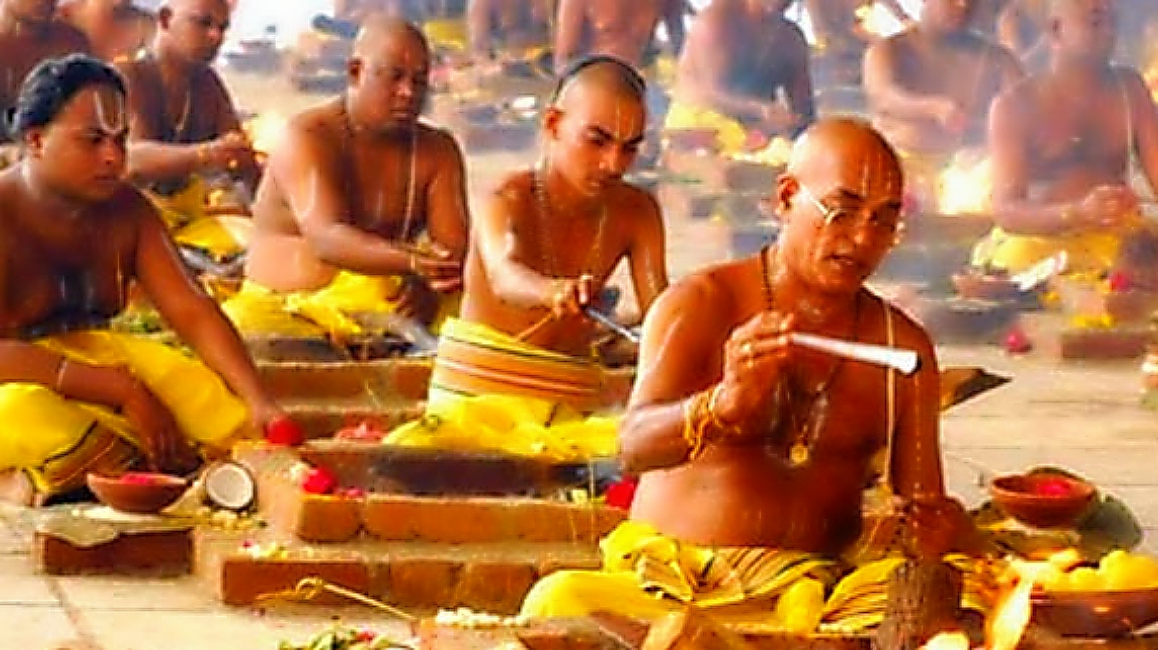Homa is Sanskrit for a ritual, wherein an oblation or any religious offering is made into fire. A homa is sometimes called a “sacrifice ritual” because the fire destroys the offering, but a homa is more accurately a “votive ritual”. The fire is the agent, and the offerings include those that are material and symbolic such as grains, clarified butter, milk, incense and seeds.
It is rooted in the Vedic religion, and was adopted in ancient times by Buddhism and Jainism. The practice spread from India to Central Asia, East Asia and Southeast Asia. Homa rituals remain an important part of many Hindu ceremonies, and variations of homa continue to be practiced in current-day Buddhism, particularly in parts of Tibet and Japan. It is also found in modern Jainism.

An attempt was made to study and evaluate the environmental impacts during performance of Chandi homam at Sri Devi Veda Vidyalayamu, Srisailam. A review of literature highlighted the scientific work undertaken by different organizations and individuals on homam/ agnihotra/ yajna and its beneficial effects on human beings, animals, plants and materials in the vicinity of homam. The procedure adapted for the study consisted of
• Collection of gaseous and particulate samples from two points near homa kundam and one controlled point in the ambient air.
• Collection of Bottom ash samples from homa kundam.
• Analysis of gaseous samples and particulates from all the three points of instrument positions
• Heavy metals analysis in ambient particulate emissions and the bottom ash.
Samples of bottom ash collected from eastern, southern, western and northern parts of homa kundam were analysed for heavy metals using an Atomic absorption spectrophotometer (AAS). The results of analysis of SPM for heavy metals clearly showed very high concentrations of Zinc (Zn). The results of analysis of bottom ash for heavy metals showed mainly Lead (Pb) and Manganese (Mn). Although the scope of research studies in this area is very vast, the present studies were undertaken with limited scope in limited time.
In a few articles based on the paper Environmental Impacts of Homam– a Case Study (at Sridevi Veda Vidyalayamu, Srisailam) Indus Scrolls is bringing you details of this ancient Indian custom that was key to good health and well being since ancient times in India.
The study was conducted by Narayana Rao.M, Sukruti Duvvuri, Hari Ram Naik, Gopi Kiran.M and Manu Srivatsav.G


















Discussion about this post